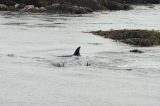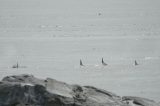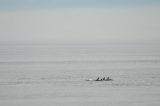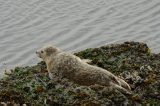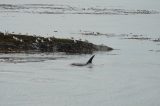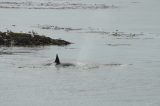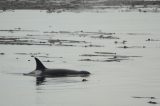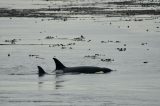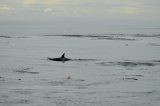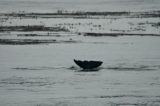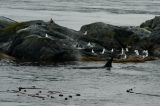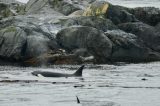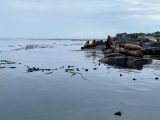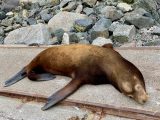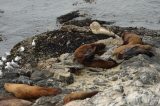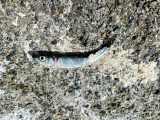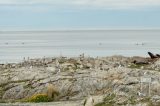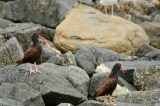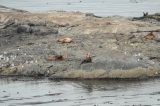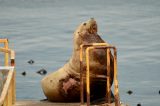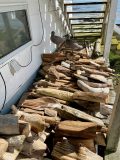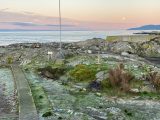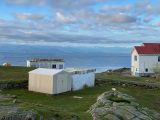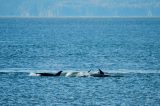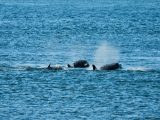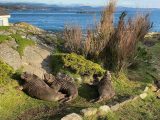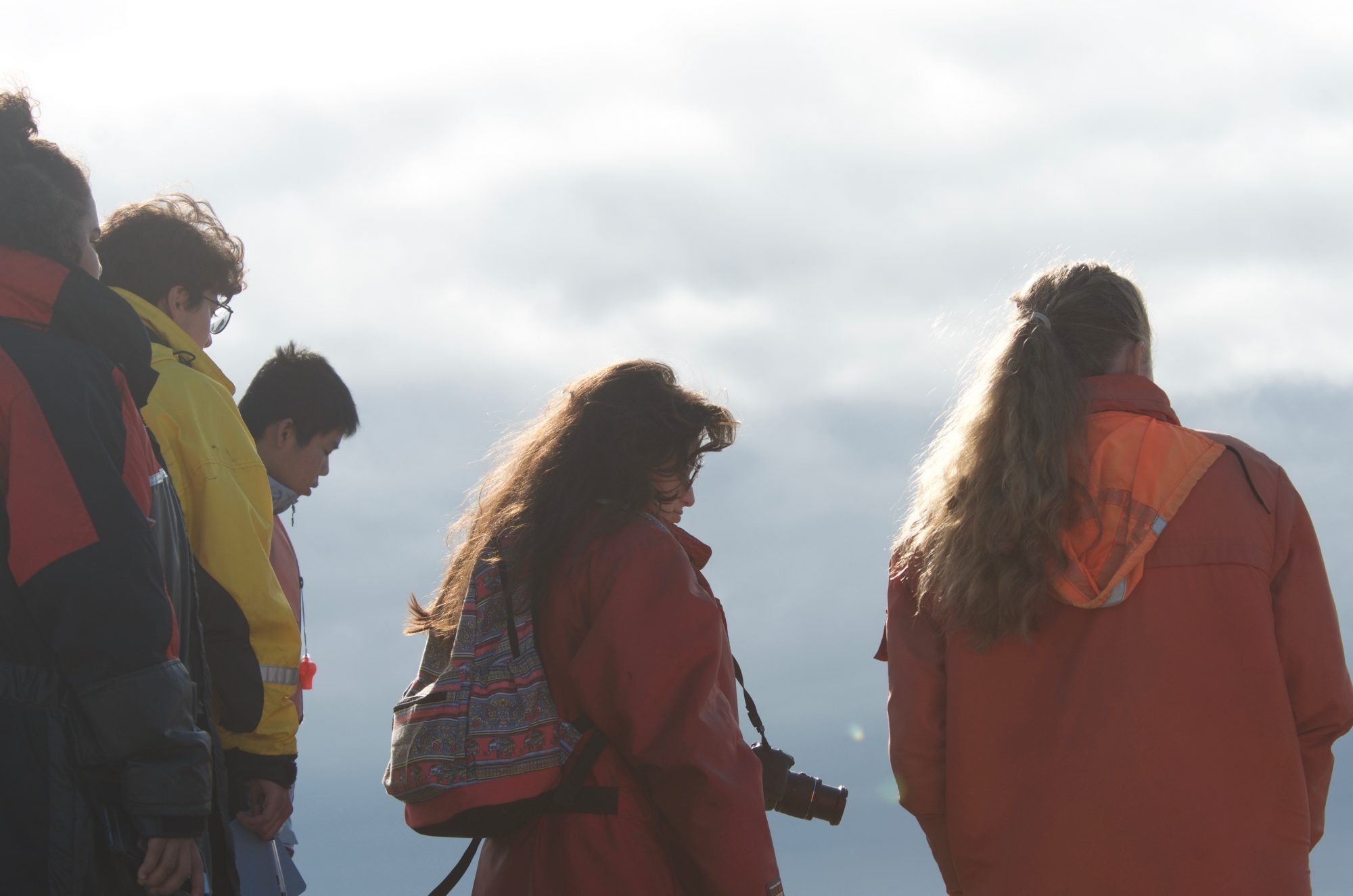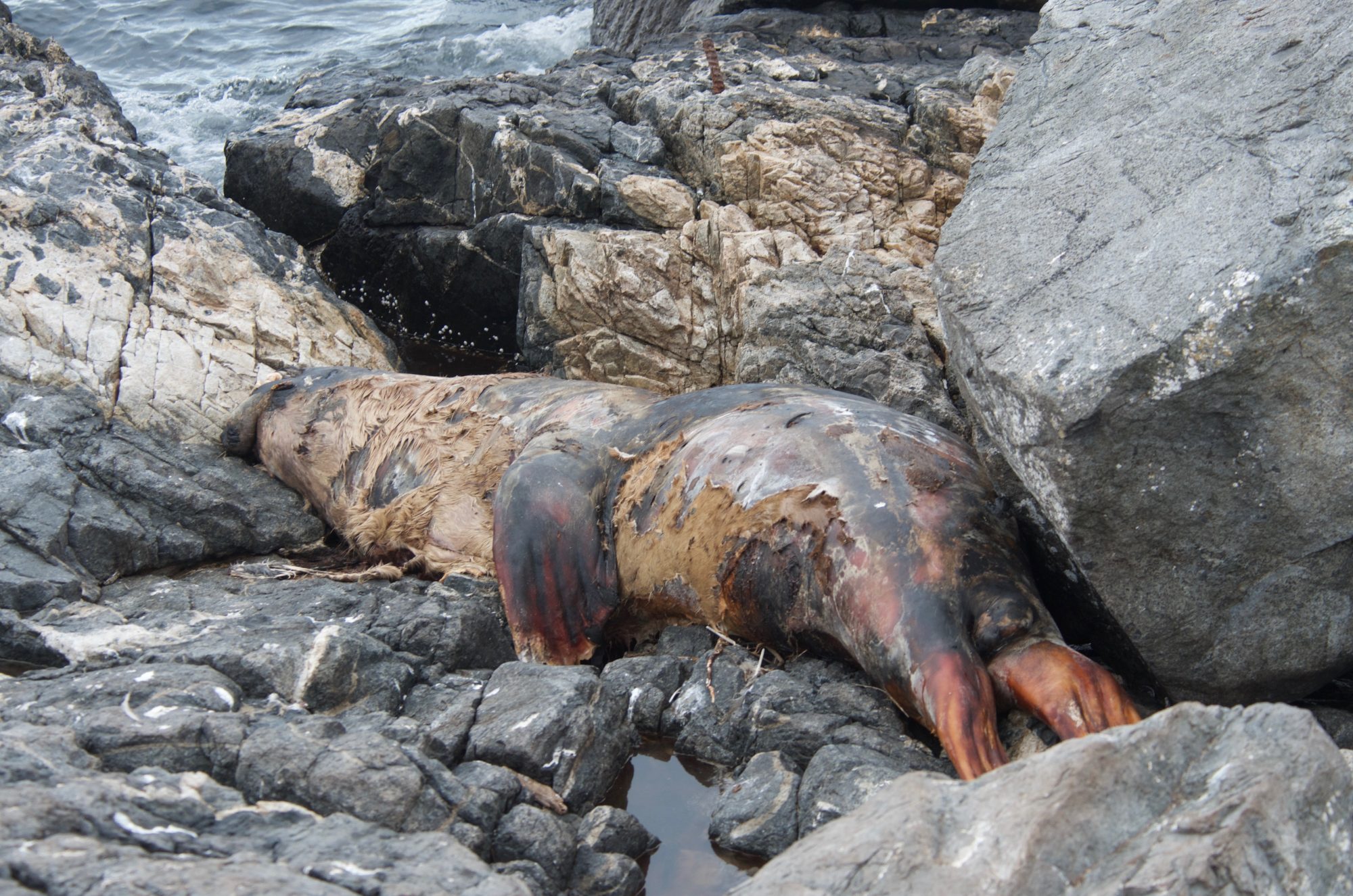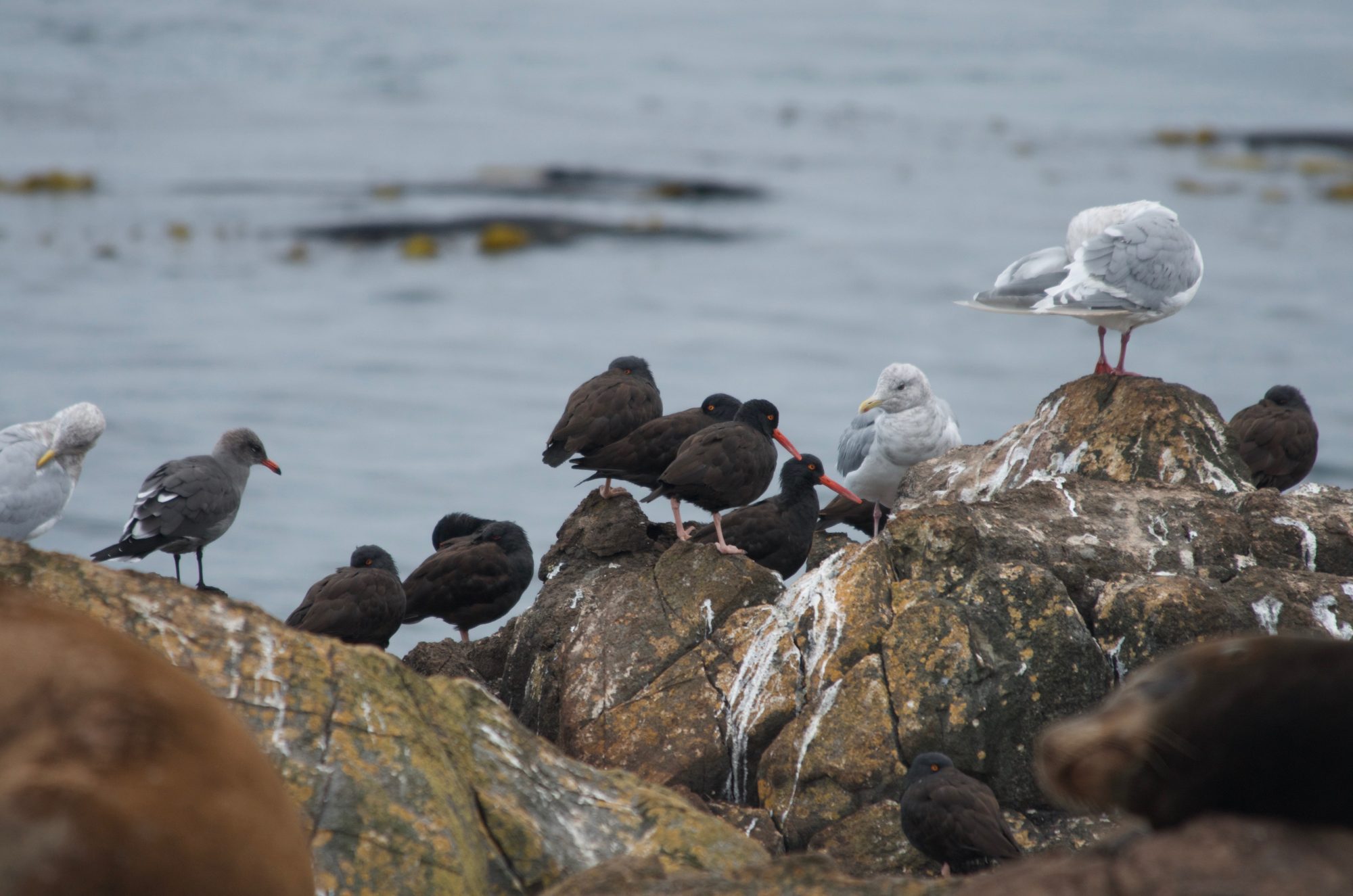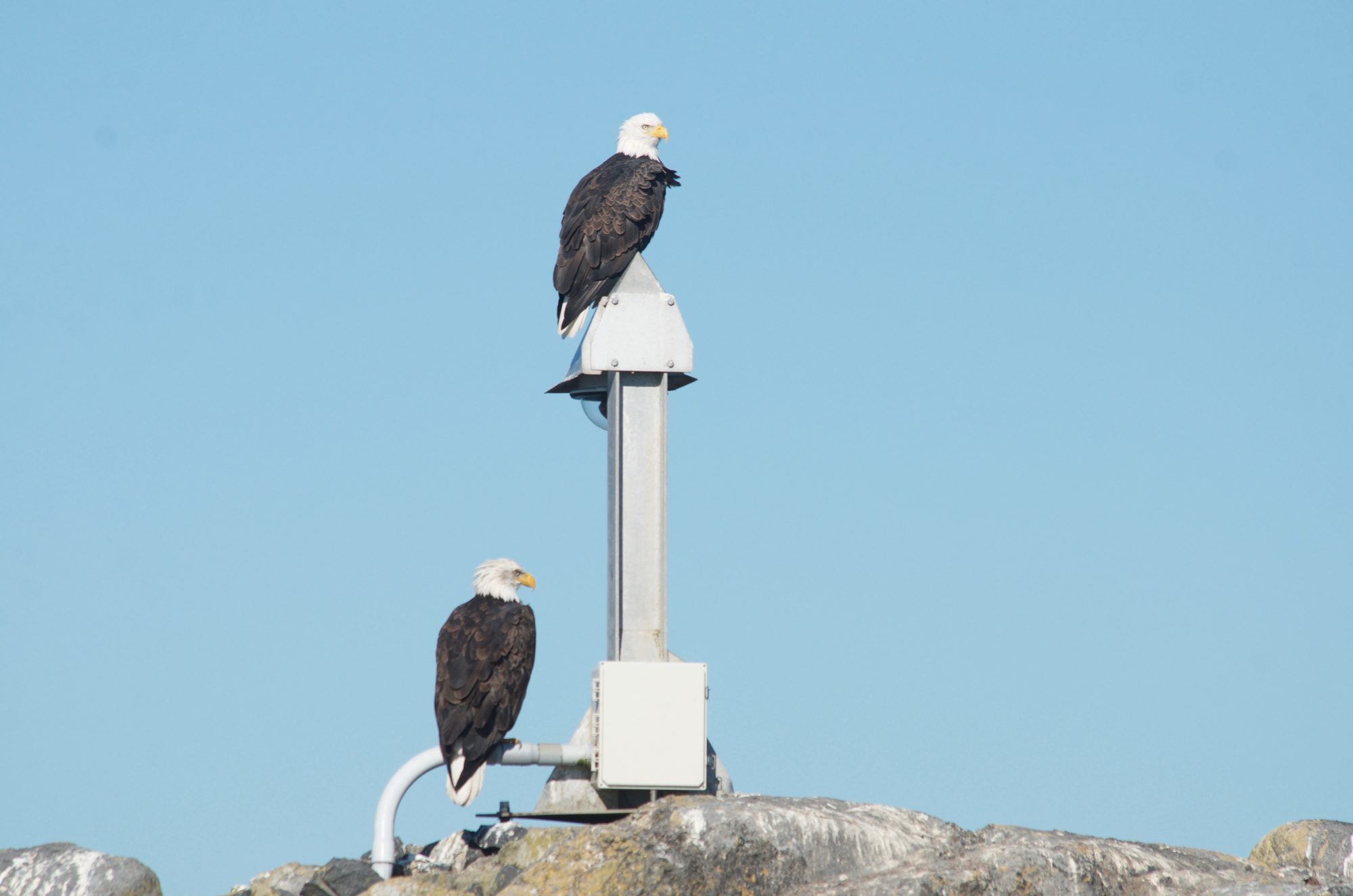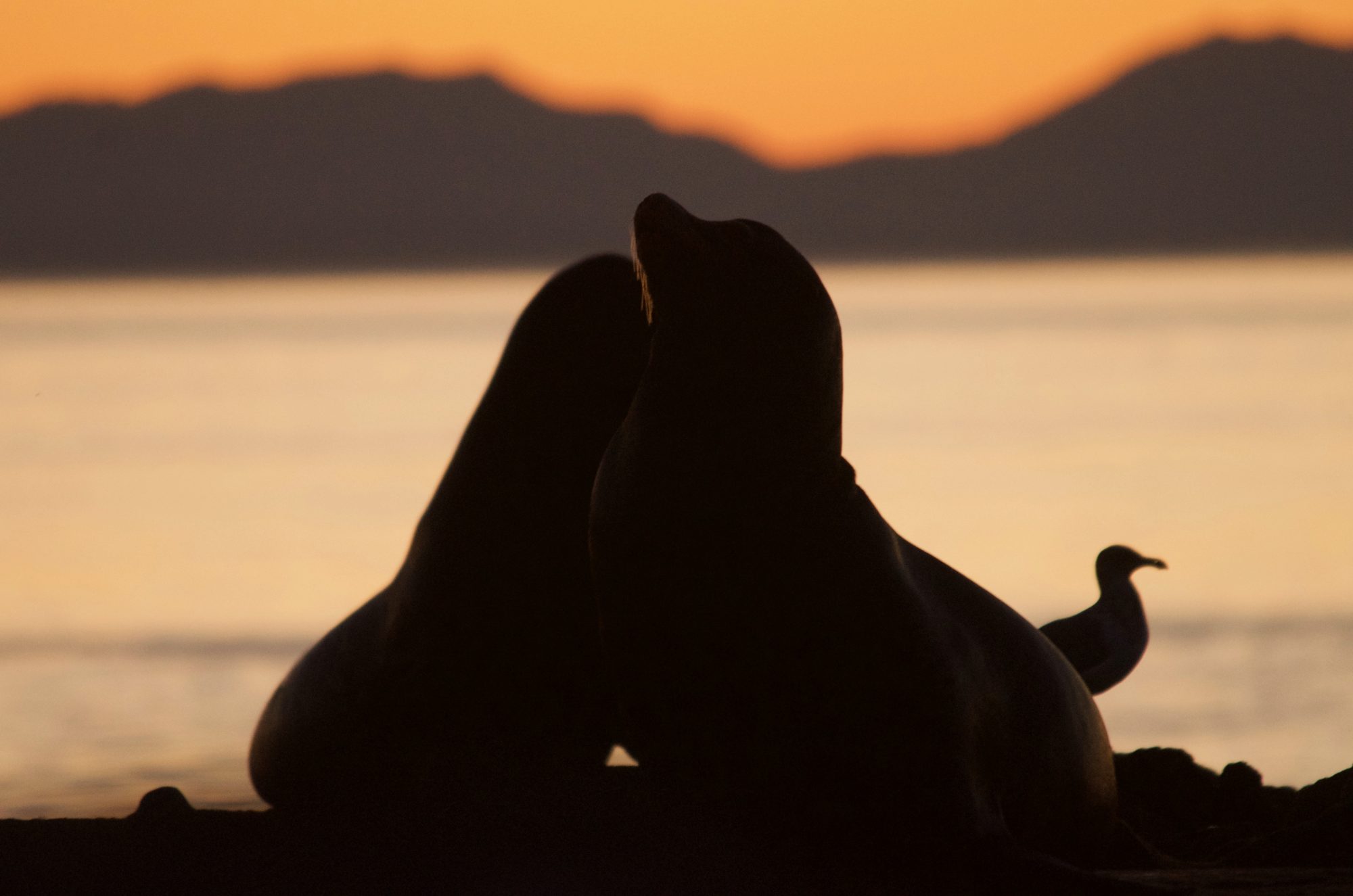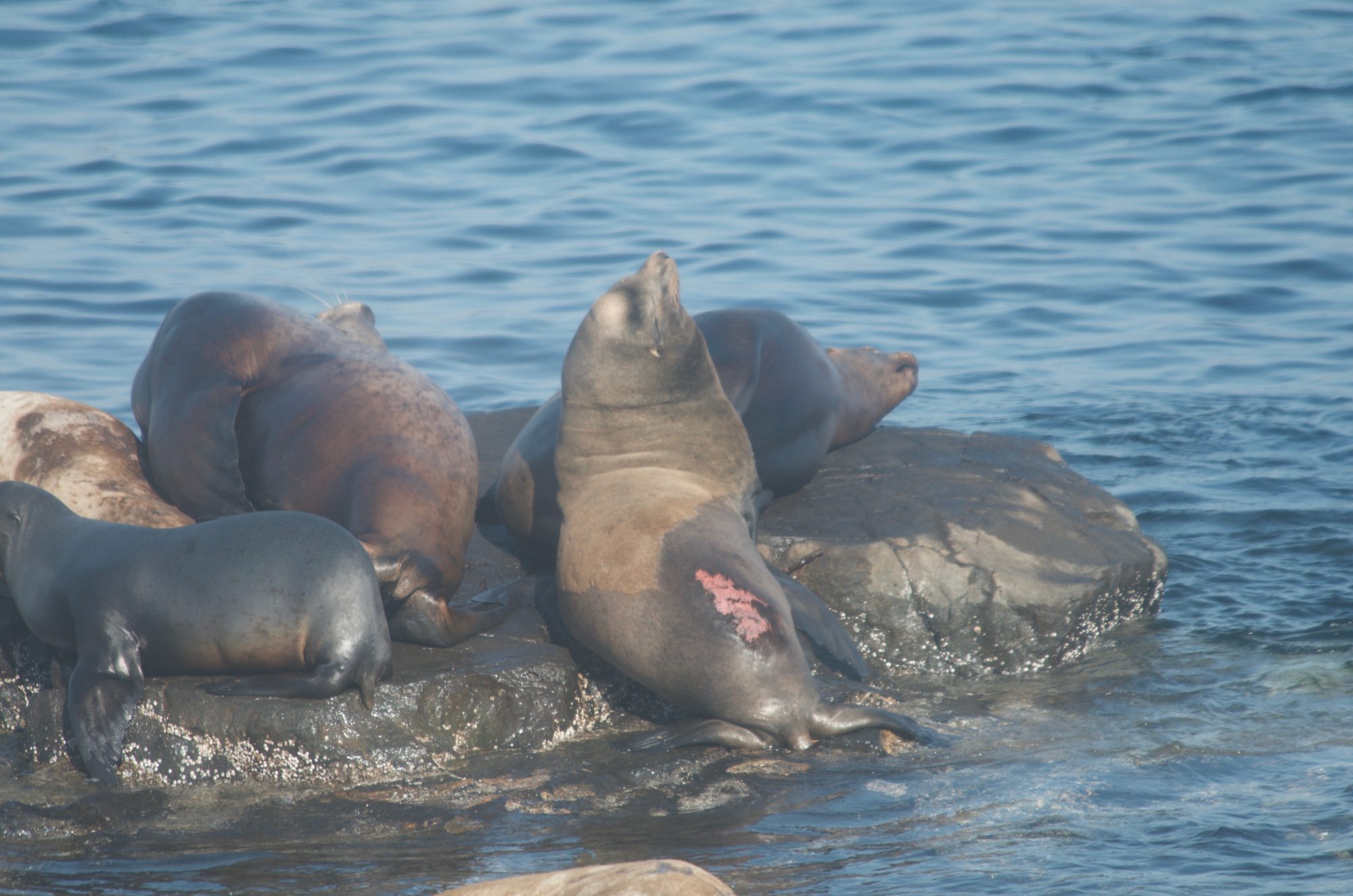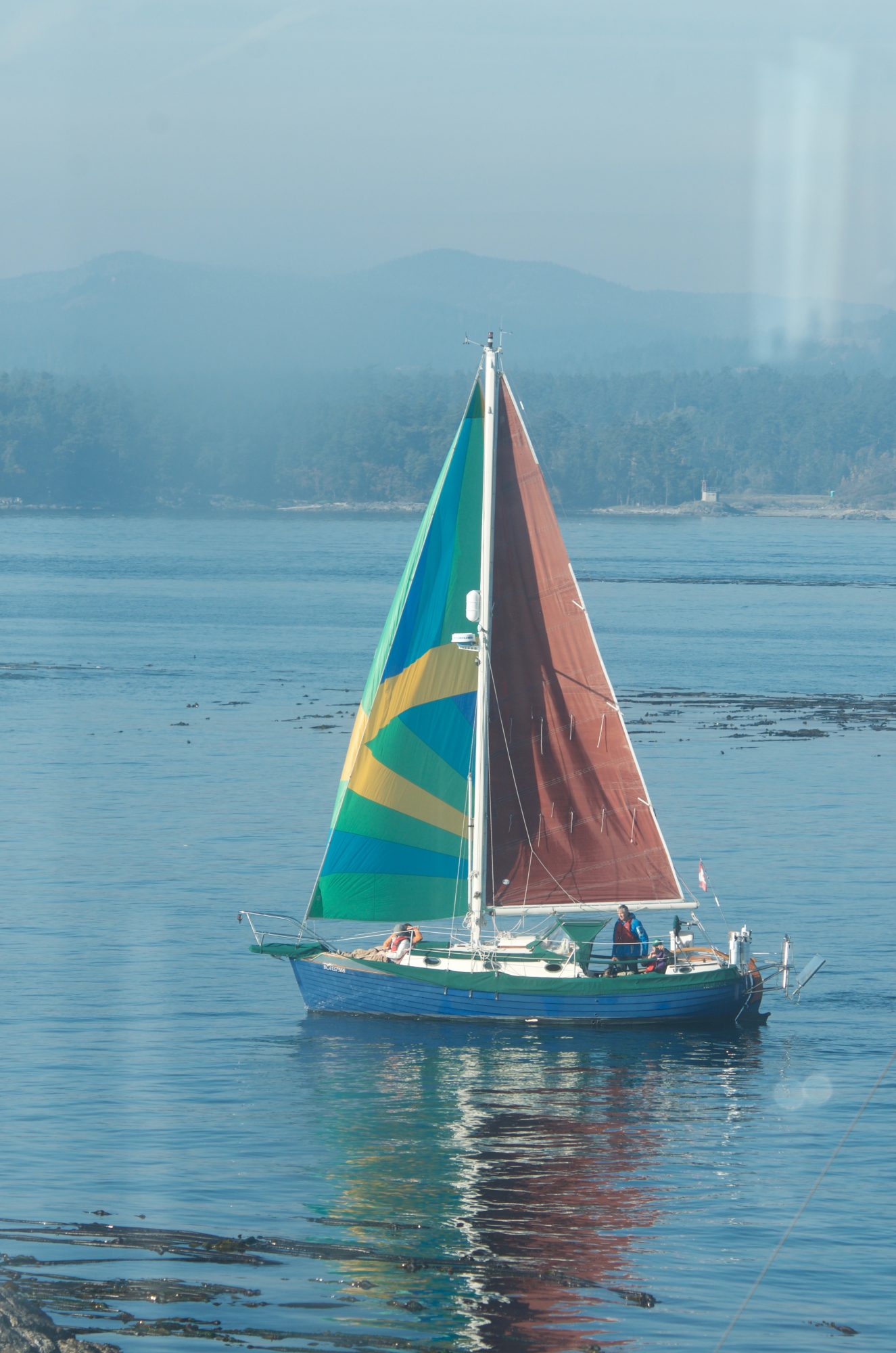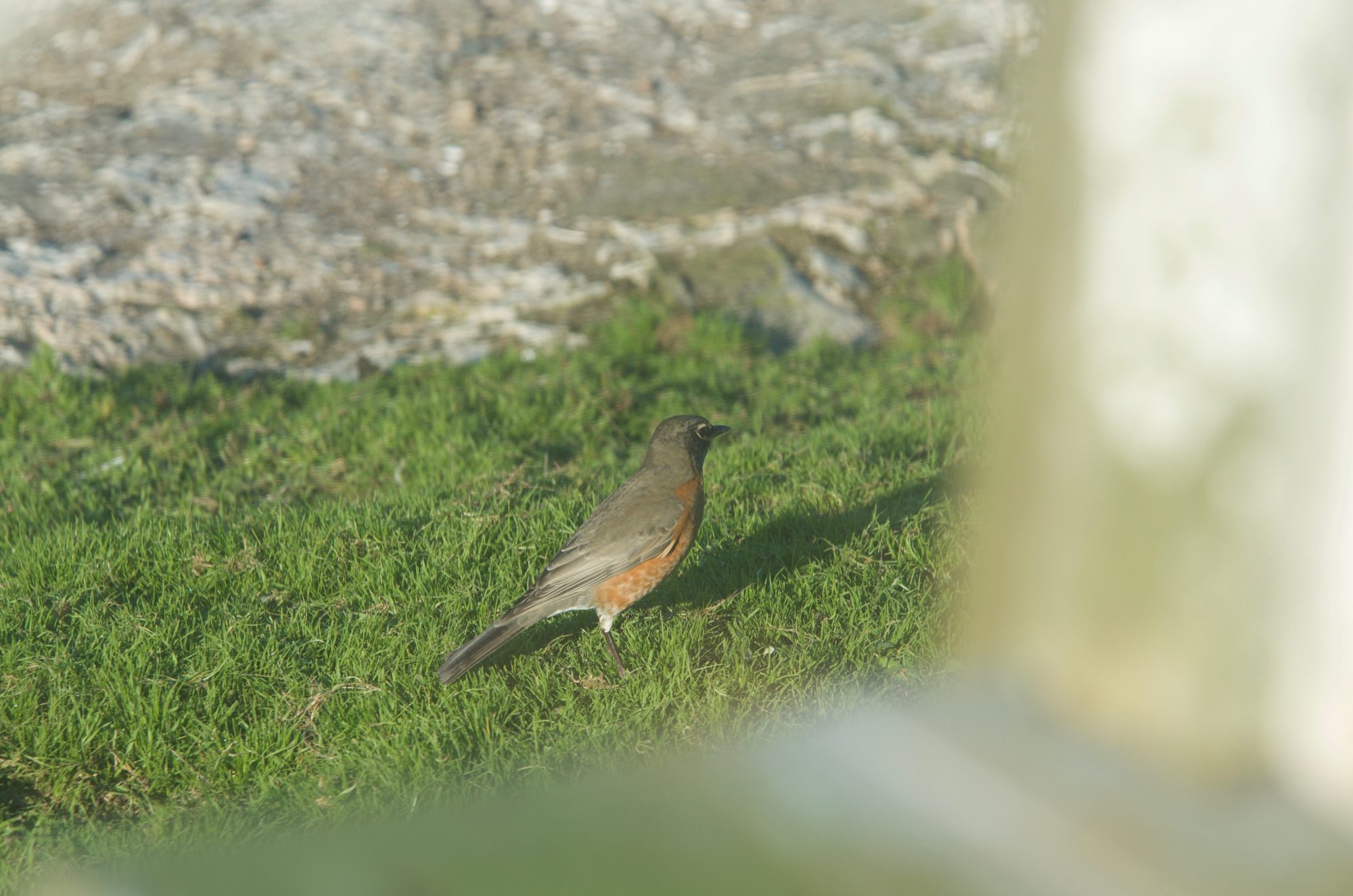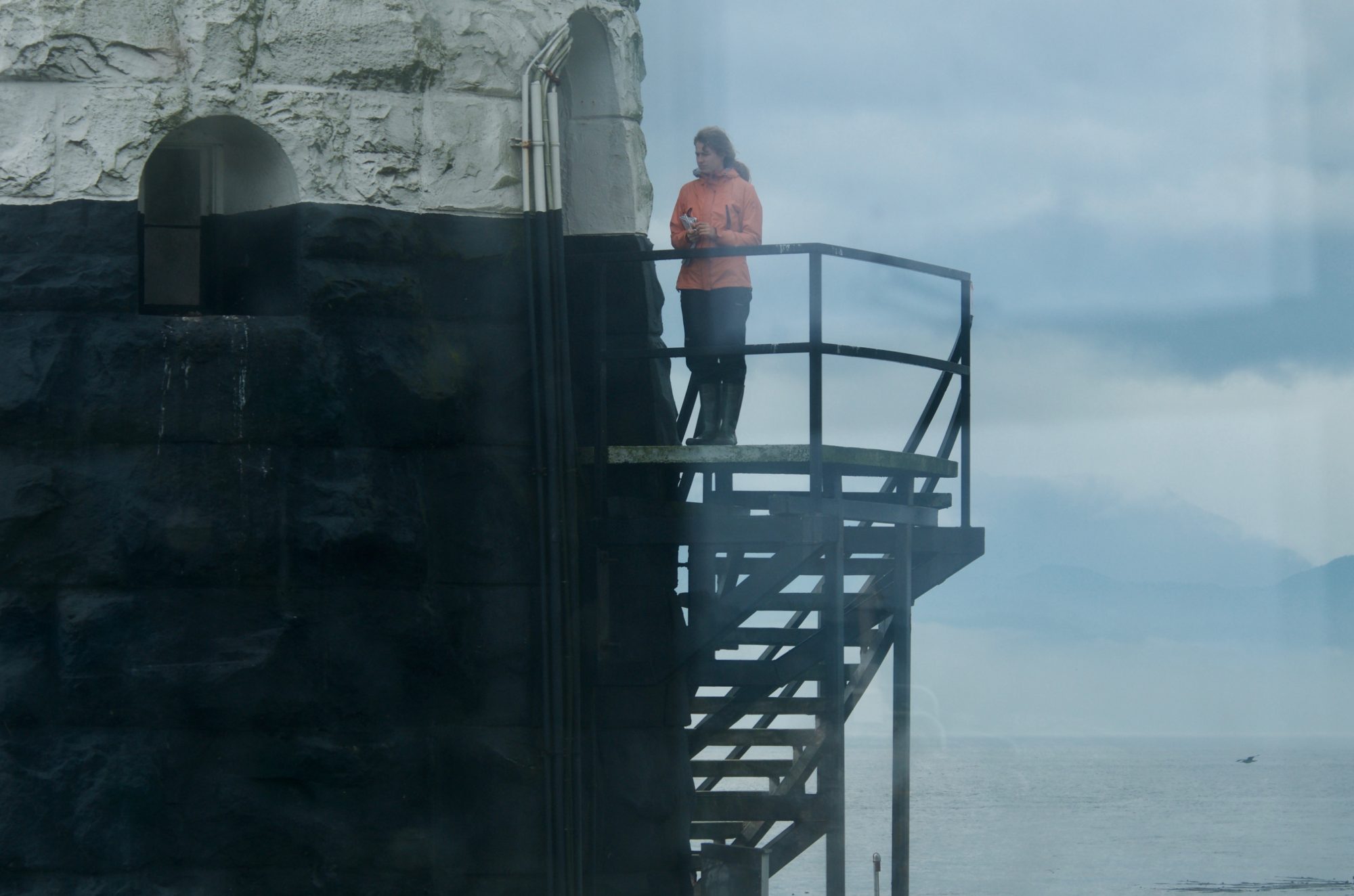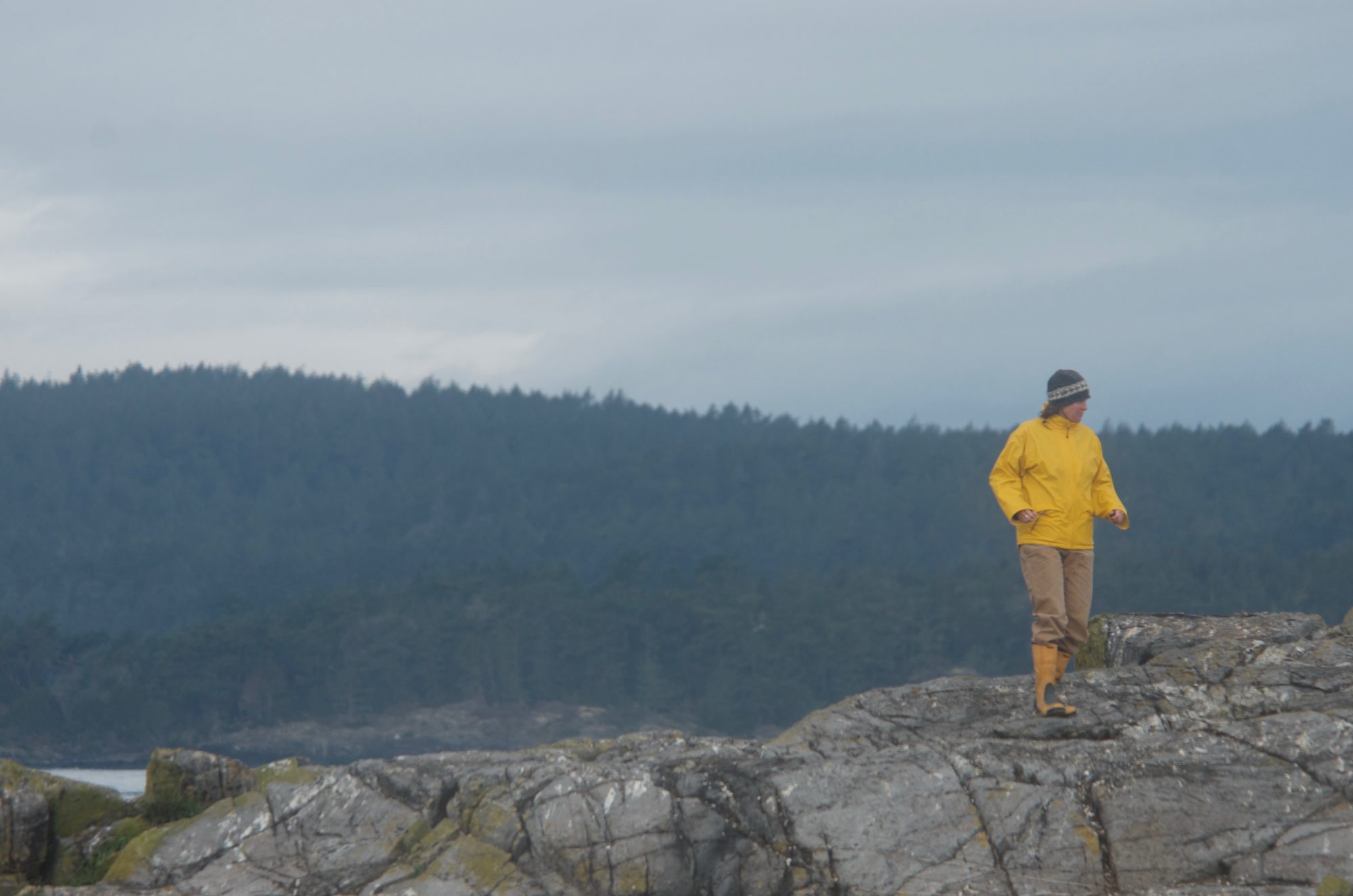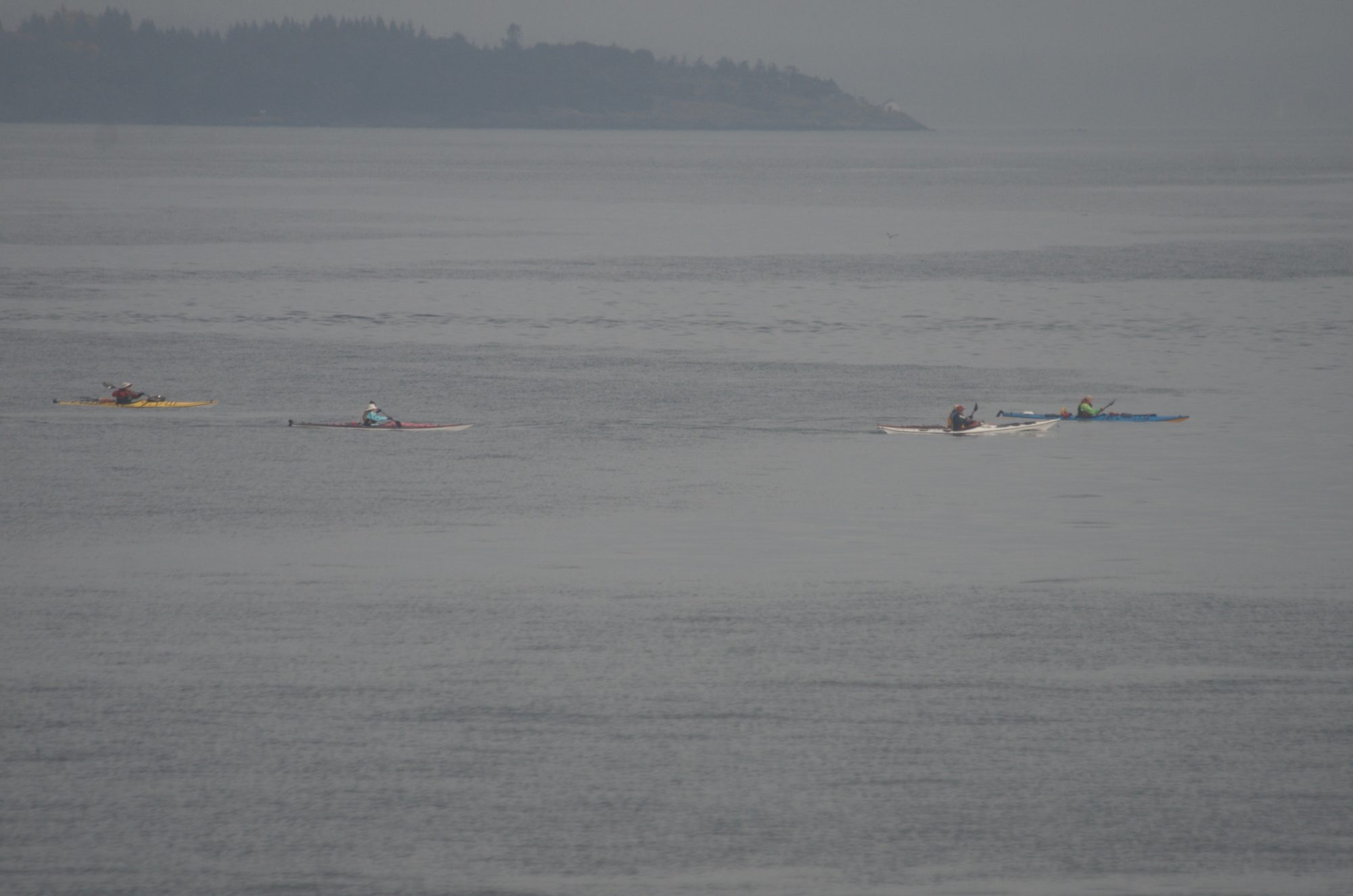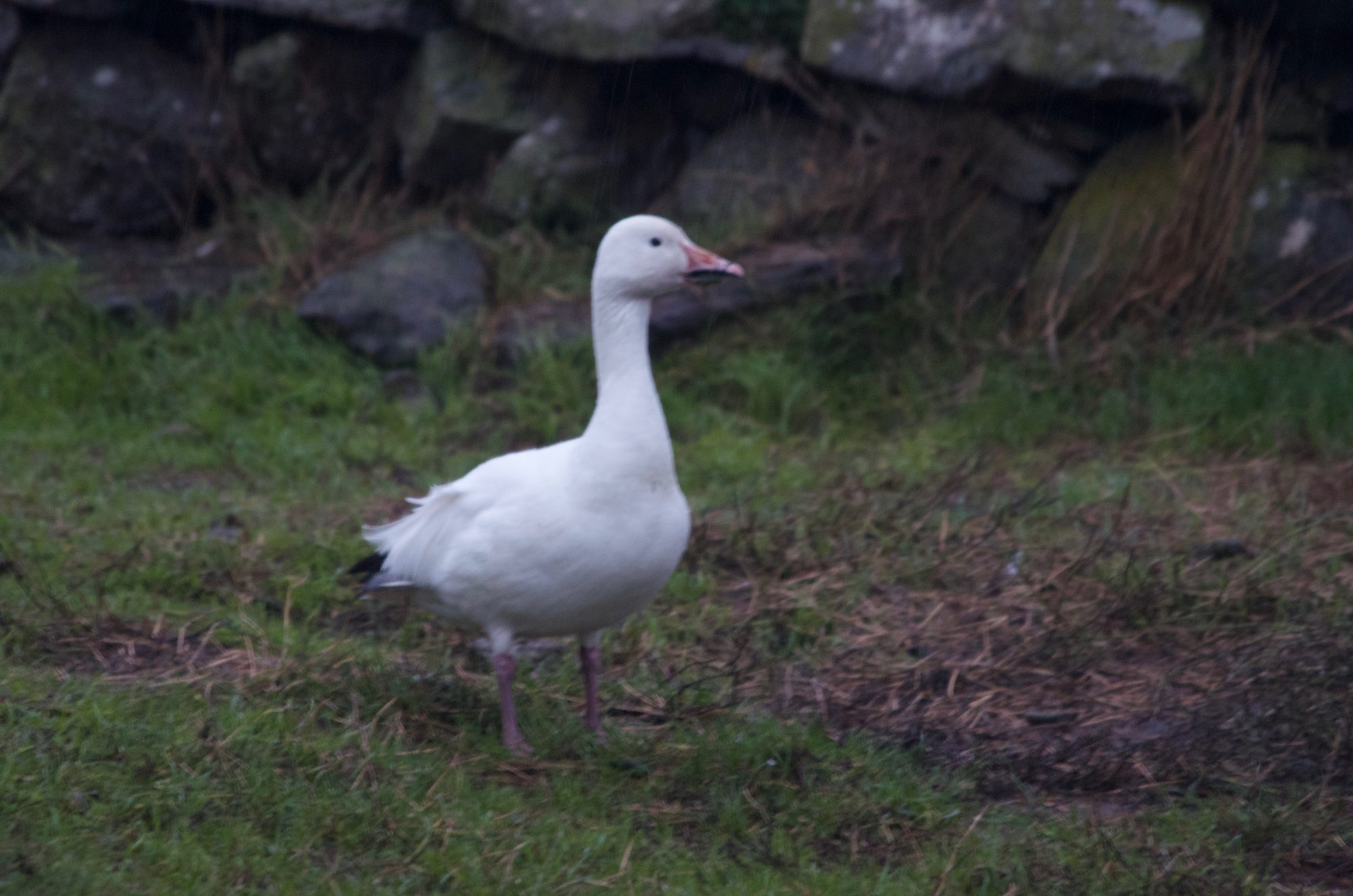Wind: W at the beginning and end of day, NE mid morning to early afternoon, 4-18 knots
Sea State: calm
Visibility: 0-10 NM
Sky: fog in morning, clear in the middle of the day, overcast in afternoon, rain in evening
Temperature: 12-17 °C
Atmospheric CO2: 412.15 ppm (recorded by NOAA at Mauna Loa Observatory, Hawaii)
There was a lot marine mammal activity today. At 11:00, two pods of Bigg’s transient killer whales were in the ecological reserve. One pod appeared to have about six whales. The other pod appeared to have three. Both pods spent a lot of time around the South Islands. A nearby whale watching boat captain mentioned on the VHF radio that the orcas were two families most likely having some social time. They were probably having a good meal too. I didn’t see any hunting happening on the surface. Transients eat marine mammals like seals. I did see a lot of harbour seals not taking any chances, huddled together on nearby rocks and around the east bay beach, looking towards the areas where the orcas were swimming. The transients stayed around until at least 3:30.
See the photos below for views of the orcas and other sights from today:
- Three transients in the south channel with many harbour seals on the rocks, probably trying not to become the next meal for the orcas. The large dorsal fin has a distinctive notch on the back side, which could help identify it. DFO has a 127 page document photos identification for the Bigg’s (Transient) Killer Whales from BC, Northern Washington and Southeastern Alaska. I flipped through the photos, but could definitively identify the orca.
- Four transients
- A family of four transient orcas surface south of the South Rocks.
- A large harbour seal looks on to the action in Middle Channel.
- Orca
- Orca
- Orca
- Two orcas surface in near the bull kelp
- A brave or foolish male steller sea lion swims toward an orcas.
- The fluke of an orca
- An orca takes a breath beside South Rock close to gulls, an oystercatcher and harbour seals.
- An orca surfaces near some scared looking harbour seals on the South Rocks.
- View from the jetty of sea lions on the rocks and an orca behind them.
- A california sea lion on the boat ramp that appears to have glaucoma in its left eye.
- Three different species hauled out together on the south side of the island: steller sea lions, california sea lions and harbour seals.
- An overlooked gull snack that was left on the path. It appears to be a juvenile herring.
- While I was eating lunch in the house, I saw a different kind of marine mammals, a group of seven sea kayakers approaching from the west. The kayakers paddled around the ecological reserve and headed north.
- Oystercatchers making noise
- The steller sea lion with the flasher is still hauled out on Middle Rock with the flasher attached. Behind is another steller, who was spotted recently with a suspected shark bite on its side.
- The steller with a suspected shark bite wound made a brief appearance on the jetty this afternoon.
- Two gull chicks look on as I stack winter firewood under the back porch.

